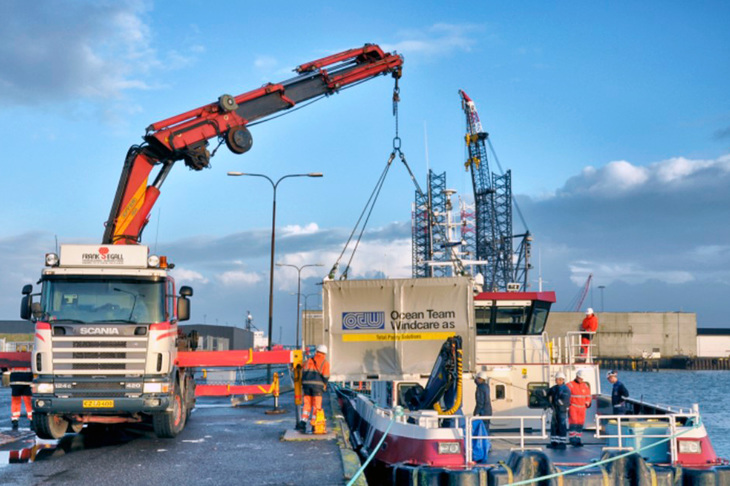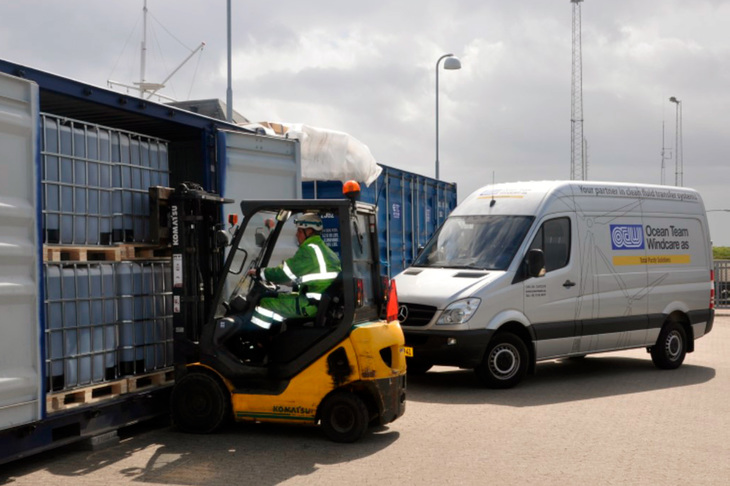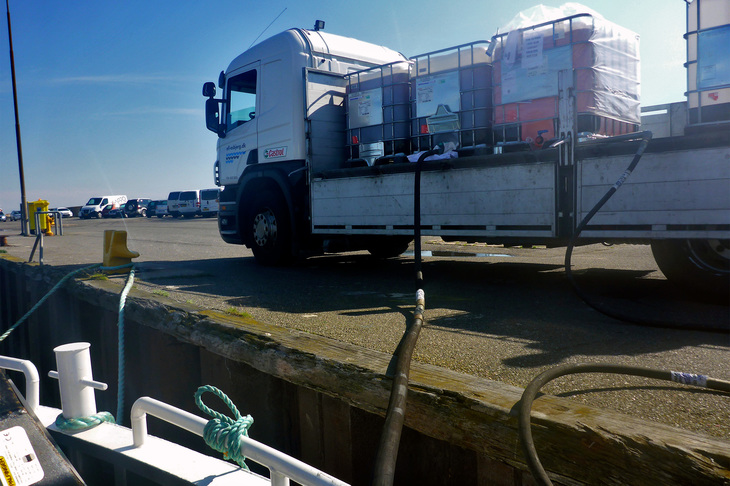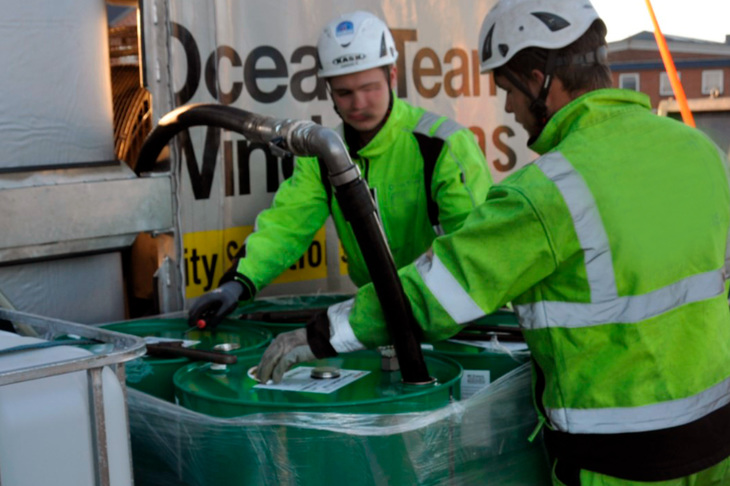A more efficient oil handling on-shore using the SOCOT principle for oil conversion proves beneficial to risks assessed regarding maritime environment and strenuous work procedures. Repeated processes of lifting 20 liters canisters are simply superseeded by a few lifts.
Client Appraisals:
A major waste handling oil operator in the Danish sector states:
"Everything ran like a clockwork: anything from the planning phase to collection of oil went perfect".
The IKM Ocean Team Advantage
As IKM Ocean Team introduced the new and more efficient SOCOT concept on the market, oil handling also became more simple to our client. Transporting thousands of liters of oil in tanks instead of twenty liter canisters, reduces work handling processes and eliminates the need for storage, theft preventing, as well as the risk for condensation and bacteria growth.
Loading of the SOCOT unit on-board
Risk assessment converting and handling oil using the SOCOT concept includes oil spill, leakage, fire hazard as well as prevention of maritime environmental hazards.
Traditional Oil Handling Process
Thousands of liters of oil to wind farms are traditionally delivered on the quayside in twenty liter canisters.
A traditional oil conversion will also need an equivalent amount of empty canisters to be transported from the quayside and filled with waste oil in the nacelle.
Logistics of Twenty-liters Canisters
Overall, the bulk of empty oil canisters undergo the following journey:
Quayside -> Vessel -> Base of WTG -> Hoisted into the nacelle -> Filled with waste oil -> Hoisted to the base -> Lifted to the vessel -> Lifted to the quay side for the waste handler to collect them.
Equivalently, the filled 20 liters canisters undergo the following process:
Quayside -> Vessel Base of WTG -> Hoisted into the nacelle -> Emptied into the gear or hydraulic systemg Hoisted to the base -> Lifted to the vessel -> Cleaning of the containers -> Lifted to the quayside for the waste handler to collect them.
Each twenty liter canister has to be carried by hands and moved by legs. This is a very resourceful process that our client decided not having their employees spending time on.
Traditional Oil Handling Risks
The manual handling exposes health hazards to employees, which is not desired by our client. In addition, the maritime environment obliges professionals in the offshore environment to avoid spills and leakages for which there are no safety measures using the traditional method.
Improved Handling

Oil Storage of 1000 ltrs IB Containers
As our client previously felt exposed to theft when using filled twenty liter containers a store capacity was needed on the pier for our 1000 ltrs. IBCs. Drip trays and spill kits provided environmental protection against the filled oil containers. The optimal stored oil needed a temperate environment to avoid condense in the oil and, with prolonged storing, to avoid growth of bacteria.

Loading of a 1000 ltr. IBC to the vessel

Transfer of oil from drums to the SOCOT unit.
The Client’s Benefits
Hence, our client worries not about the number of employees moving plastic containers around unsafely. Besides, with the improved ease of handling, costs are reduced using the SOCOT concept and its additional service of oil handling: allowing efficient offline filtering during transport, and eliminating safety concerns on behalf of the client.